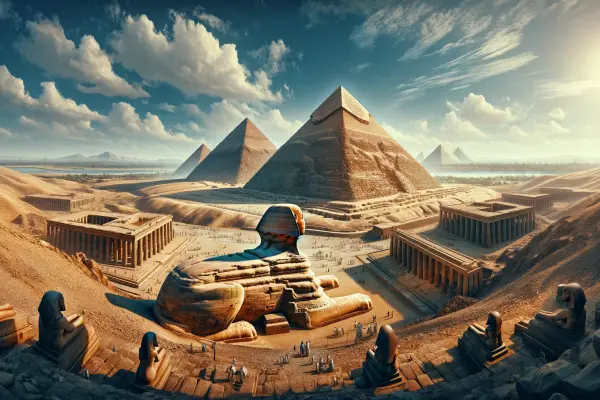Ancient Egyptian architecture is rightfully considered one of the greatest architectural traditions in the world. Egyptian architects created structures of remarkable beauty and scale, many of which have survived to the present day. These monumental creations reflect ancient Egyptian culture and their beliefs about the world and the afterlife[1].
Main Features of Ancient Egyptian Architecture
The primary characteristics of ancient Egyptian architecture include monumentality, strict symmetry, and the use of columns and pilasters. Buildings were typically oriented according to the cardinal directions, reflecting the connection between architecture, religion, and the astronomical knowledge of the Egyptians.
Great attention was paid to decoration—reliefs, frescoes, and sculptures. Symbolic imagery and hieroglyphic inscriptions, which narrated events of the time and showcased the richness of Egyptian art, were common.
"The grandeur of Egyptian architecture lies in its ability to convey the idea of eternity. It was architecture created not for the present but for eternity, which is why it leaves such a profound impression on us millennia later." — Jean-François Champollion, decipherer of Egyptian hieroglyphs
Main Architectural Structures
Among the numerous monuments of ancient Egyptian architecture, pyramids, temples, and tombs hold a special place. Each type of structure had distinct characteristics and served specific religious and cultural purposes.
Egyptian Pyramids
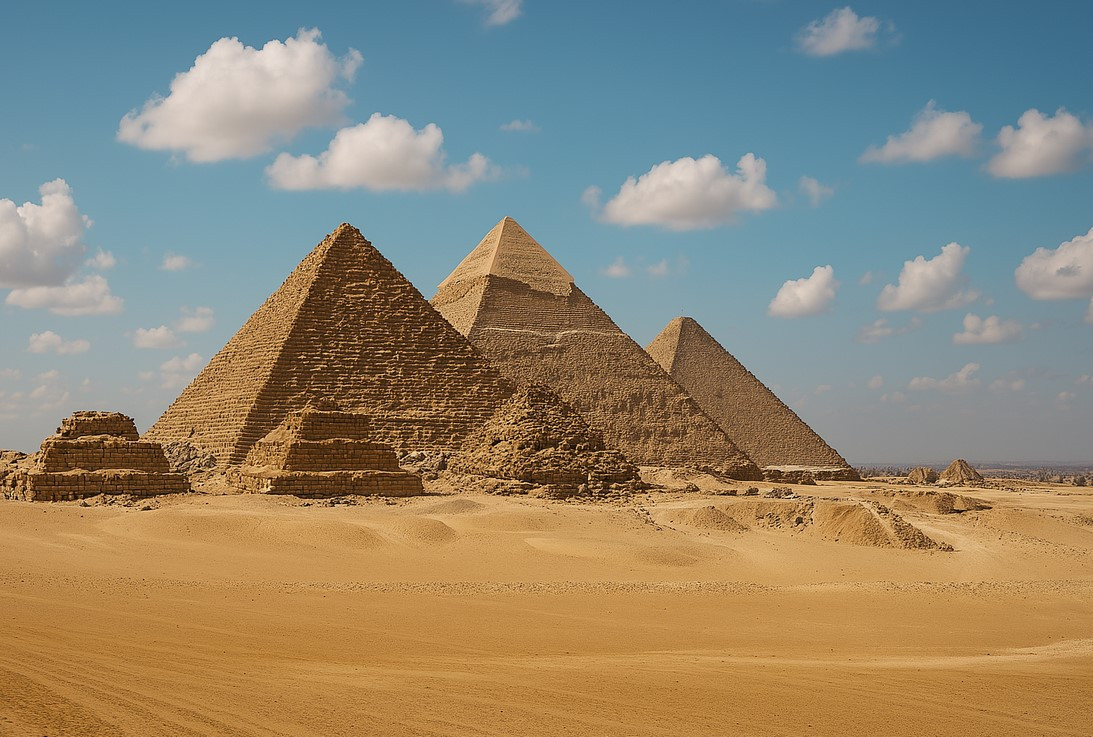 Pyramids are rightfully regarded as the hallmark of ancient Egyptian architecture. The most famous pyramid complex is located in Giza, comprising the pyramids of Khufu, Khafre, and Menkaure, as well as the majestic Great Sphinx guarding this necropolis.
Pyramids are rightfully regarded as the hallmark of ancient Egyptian architecture. The most famous pyramid complex is located in Giza, comprising the pyramids of Khufu, Khafre, and Menkaure, as well as the majestic Great Sphinx guarding this necropolis.
The Pyramid of Khufu, built in the 27th century BCE, remained the tallest man-made structure in the world for millennia. It stands approximately 140 meters tall with a base perimeter of 230 meters. The Pyramid of Khufu is distinguished by its precise geometric forms and colossal dimensions.
Inside the pyramid lies a complex labyrinth of corridors and chambers, at the center of which was the pharaoh’s burial chamber. This internal structure reflects the complexity of ancient Egyptian beliefs about the soul’s journey to the afterlife.
Interestingly, the first true pyramid is considered to be the Step Pyramid of Pharaoh Djoser in Saqqara, designed by the architect Imhotep. It marked the beginning of the tradition of constructing monumental pharaonic tombs in the form of pyramids.
Ancient Egyptian Temples
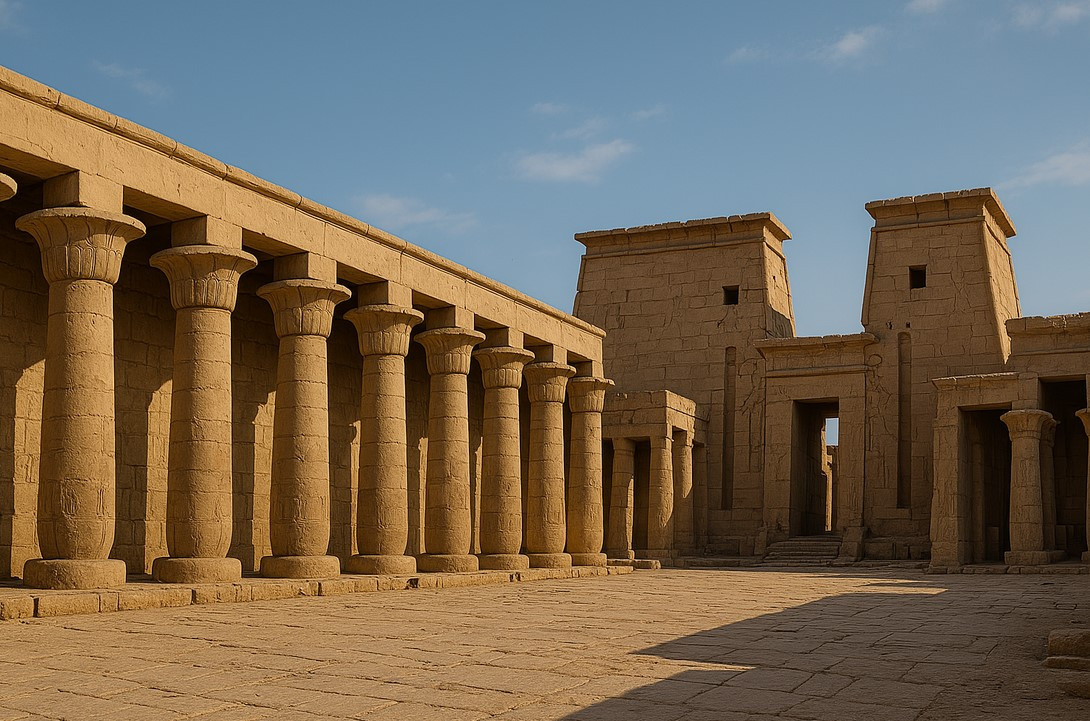 Equally impressive were ancient Egyptian temples. One of the grandest is the Karnak Temple Complex, dedicated to the god Amun-Ra. Spanning 40 hectares, it was constructed over nearly 2,000 years.
Equally impressive were ancient Egyptian temples. One of the grandest is the Karnak Temple Complex, dedicated to the god Amun-Ra. Spanning 40 hectares, it was constructed over nearly 2,000 years.
The temple featured a long axial layout, with its central element being a massive hypostyle hall measuring 50 × 100 meters. The hall was supported by 134 colossal columns, up to 24 meters tall, creating the impression of a stone forest.
The columns and walls of the temple preserve numerous reliefs and inscriptions narrating the lives and deeds of pharaohs. These images were not merely decorative—they conveyed significant information about the religious beliefs and history of Ancient Egypt.
Another renowned temple complex is the Luxor Temple, connected to Karnak by an avenue of sphinxes. These temples hosted the most important religious ceremonies, including the coronation of pharaohs.
"What strikes one in Egyptian temples is their ability to create a sense of transition from the human world to the divine. Passing through pylons, colonnades, and inner halls, one gradually enters a sacred space where light and shadow play a special role." — Howard Carter, archaeologist who discovered Tutankhamun’s tomb
Pharaohs’ Tombs
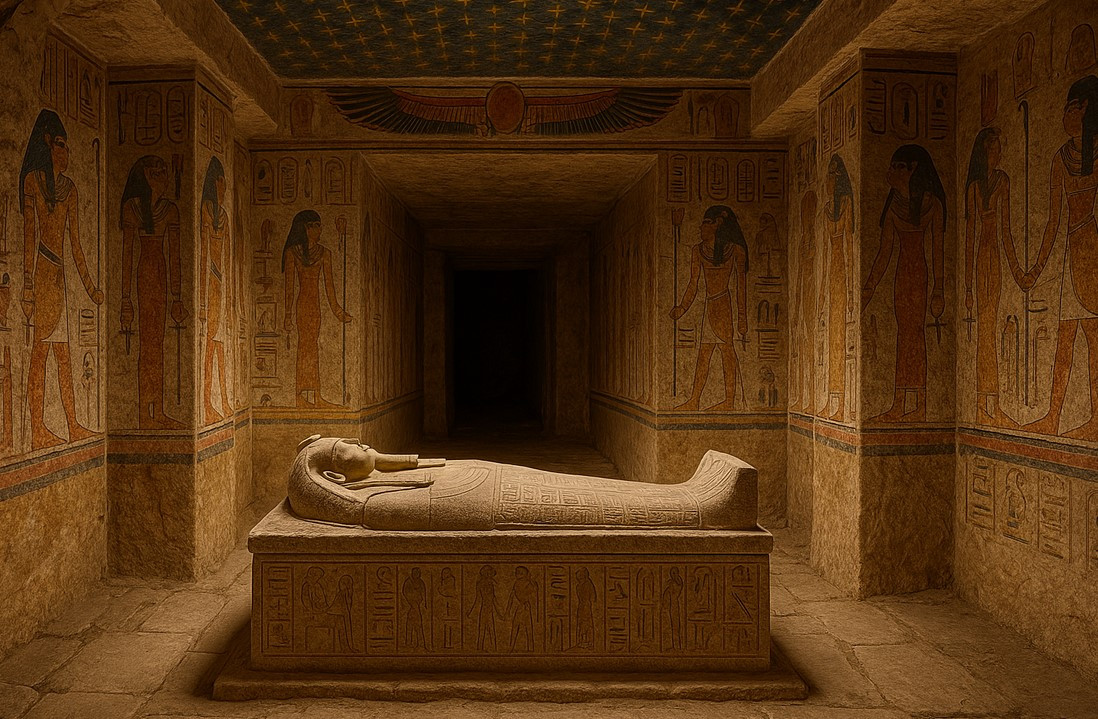 A striking example of Egyptian funerary architecture is the Valley of the Kings near Thebes. Here, underground tombs for pharaohs and nobility were carved into the rocks, designed to conceal and protect the deceased from robbers.
A striking example of Egyptian funerary architecture is the Valley of the Kings near Thebes. Here, underground tombs for pharaohs and nobility were carved into the rocks, designed to conceal and protect the deceased from robbers.
The tombs consisted of intricate labyrinths of corridors, halls, and burial chambers. Their walls were richly decorated with reliefs, frescoes, and hieroglyphic texts from the "Book of the Dead." These created majestic works of ancient Egyptian funerary art, reflecting the Egyptians’ cult of death.
A unique example is the Temple of Hatshepsut at Deir el-Bahri, designed by the architect Senmut. This rock-cut temple is seamlessly integrated into the surrounding landscape and represents a masterpiece of its era’s architectural thought.
Construction Materials and Techniques
Let’s explore the materials used by ancient Egyptians and the technologies they employed to construct their monumental structures.
| Material | Application | Source Location | Characteristics |
|---|---|---|---|
| Limestone | Main construction material for pyramids and temples | Local quarries | Easily workable yet sufficiently strong |
| Granite | Cladding, decoration, monolithic elements (obelisks) | Aswan | Exceptional strength and durability |
| Sandstone | Temple construction | Gebel el-Silsila | Easily workable, warm golden hue |
| Basalt | Flooring, statues | Faiyum | Hardness and wear resistance |
| Alabaster | Small architectural details, altars | Hatnub | Translucency, refined texture |
This table illustrates the variety of materials that Egyptian builders skillfully combined to create durable and impressive structures. Each material was chosen based on its properties and aesthetic qualities. Modern technologies allow the production of various grades of crushed stone from the same rocks—granite, limestone, and sandstone—used by ancient Egyptians to build their magnificent pyramids and temples.
The Egyptians mastered advanced construction technologies of their time. They used systems of levers, inclined planes, and various winches to lift massive stone blocks, demonstrating a high level of engineering expertise.
During the construction of the Pyramid of Khufu, water clocks were employed to precisely track working hours. Additionally, the Egyptians developed unique stone-processing techniques, enabling the creation of perfectly smooth surfaces and precisely fitted blocks.
Architects of Ancient Egypt
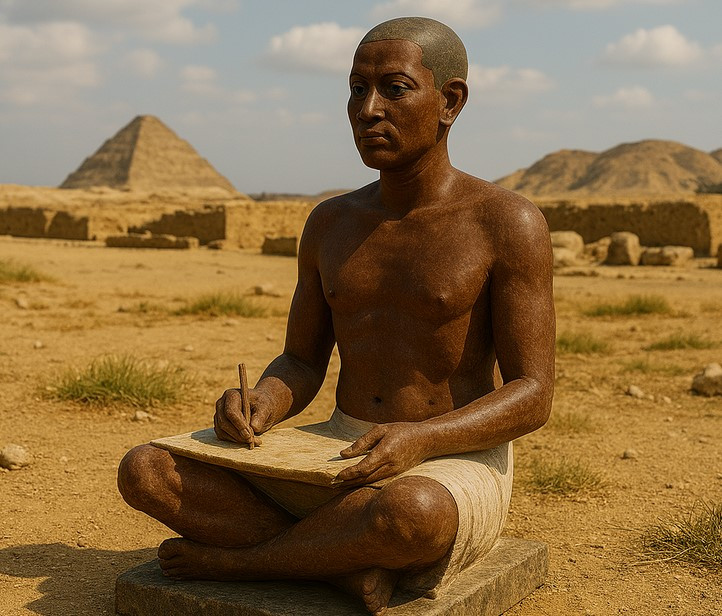 The names of prominent ancient Egyptian architects have entered the history of world architecture, though many remain unknown.
The names of prominent ancient Egyptian architects have entered the history of world architecture, though many remain unknown.
Imhotep, the designer of the first step pyramid of Pharaoh Djoser in Saqqara, introduced stone construction in Egypt and was so revered that he was later deified.
Senmut, a talented architect of the Hatshepsut era, created the unique Djeser-Djeseru, a temple carved into the rock. His innovative solutions influenced the subsequent development of temple construction.
These outstanding masters laid the foundations of ancient Egyptian monumental architecture, creating an architectural language so powerful that it continued to be used for millennia.
A Story of One Discovery
In 1922, archaeologist Howard Carter, after years of searching, discovered the untouched tomb of Pharaoh Tutankhamun in the Valley of the Kings. When Carter first peered into the tomb, his companion Lord Carnarvon asked, “Can you see anything?” Carter replied, “Yes, wonderful things!” The tomb’s interior—wall paintings, sarcophagi, and the pharaoh’s funerary mask—became a sensation and offered a fresh perspective on ancient Egyptian architecture and art. This discovery showcased the full splendor of Egyptian funerary art and demonstrated how closely architecture was tied to the religious beliefs of ancient Egyptians. The meticulously planned layout of the tomb and its symbolic decoration reflected the complexity and depth of the Egyptian worldview.
"Egyptian architecture is frozen music, in which every element has its place and meaning. The Egyptians created not just buildings but a cosmic model of the world, where architectural proportions reflected divine order." — Le Corbusier, modernist architect
Influence of Ancient Egyptian Architecture
The influence of ancient Egyptian architecture is evident in many subsequent cultures and continues to be felt today.
In antiquity, Greek temples adopted Egyptian columns and statues. The Romans borrowed the concept of obelisks, many of which were transported from Egypt and erected in Rome.
During the Renaissance, European architects drew inspiration from pyramids and referenced Egyptian orders. In the 18th and 19th centuries, following Napoleon’s Egyptian campaign, a fascination with Egyptian style emerged in Europe.
Today, architects incorporate motifs of ancient Egyptian architecture in public buildings to emphasize their monumentality and grandeur. Egyptian architects demonstrated harmony with the environment, using exclusively natural materials of local origin—a principle reflected in modern green architecture. Pyramidal forms, obelisks, and sphinxes have become universal symbols recognized worldwide [2].
Conclusion
Thus, ancient Egyptian architecture достигло its peak and produced exemplary monumental structures that remain significant today. Egyptian pyramids, temples, and tombs are rightfully considered one of the wonders of the world. Religion and architecture in ancient Egypt were inseparably linked, forming a unified system that reflected the Egyptians’ beliefs about the world and the afterlife.
Cultic structures, pylons, colonnades, and obelisks created a unique architectural language that continues to captivate us with its grandeur and harmony. The history of ancient Egypt, enshrined in stone, allows us to connect with one of the greatest civilizations of antiquity[1].
